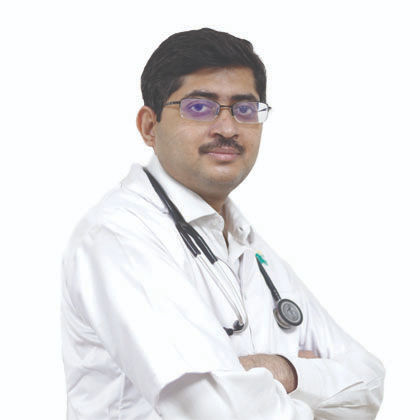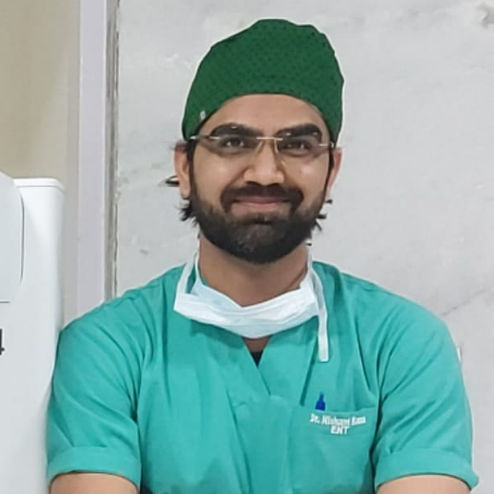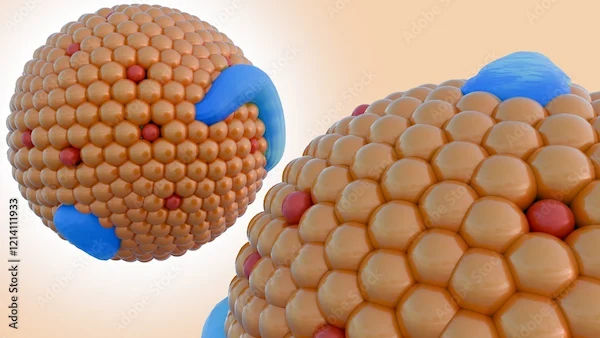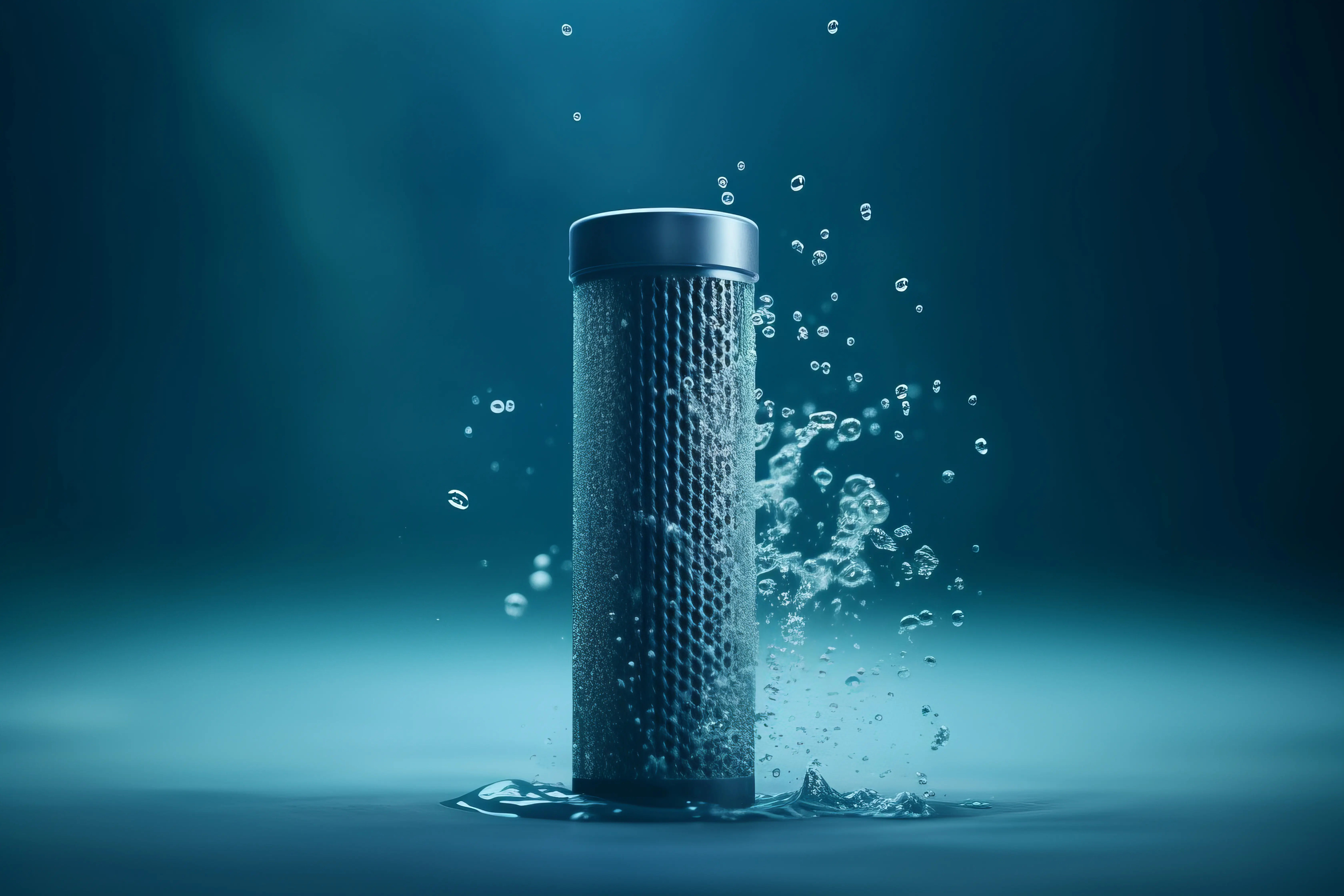Vitamin D Deficiency: Signs, Symptoms & Health Impacts
Discover the key signs of vitamin D deficiency, its health effects, and when to consult a doctor. Learn how to maintain optimal vitamin D levels for overall wellbeing.


Introduction
Feeling tired for no clear reason? Nagging muscle aches, frequent colds, or low mood that just won’t lift? These can be subtle signs of vitamin D deficiency. Vitamin D—often called the “sunshine vitamin”—helps your body absorb calcium, supports immune function, and keeps muscles and nerves working smoothly. Yet, low levels are common across all ages and regions, especially if you spend most of your time indoors, have darker skin, follow a vegan diet, or live in areas with limited sunlight.
In this guide, we’ll walk you through the most common and overlooked signs of vitamin D deficiency, who’s at risk, how it’s diagnosed, and science-backed ways to improve your levels. You’ll also learn safe supplement strategies, how much sun is enough, and when to see a doctor. If symptoms persist beyond two weeks or you want a lab check, Apollo 24|7 offers convenient home collection for tests like vitamin D, and you can consult a doctor online for tailored advice. Let’s get you from guesswork to a grounded plan, in plain language—and with practical steps you can start today.
Vitamin D 101: The Sunshine Nutrient Explained
Vitamin D is a fat-soluble nutrient that acts more like a hormone than a typical vitamin. Your skin makes vitamin D3 when UVB sunlight hits 7-dehydrocholesterol; the liver then converts it to 25-hydroxyvitamin D, the form measured in blood tests, and the kidneys convert it to the active hormone 1,25-dihydroxyvitamin D, which helps regulate calcium and phosphate balance for bone mineralisation.
In simple terms, sufficient vitamin D helps you absorb calcium from food, maintain strong bones and teeth, and support proper muscle contraction and nerve signalling. It also influences immune cell function and inflammation pathways, which is why low levels are linked to higher rates of respiratory infections and possibly to mood changes, though not all associations prove cause and effect.Consult Top Specialists Here
What vitamin D does in your body
Supports calcium absorption, bone and muscle health, nerve function, and immune regulation. Low levels can increase risk of fatigue, muscle aches, and infections.
D2 vs D3: What’s the difference?
Plant-derived ergocalciferol (D2) and animal/skin-derived cholecalciferol (D3) both raise 25-hydroxyvitamin D, but D3 generally increases and sustains blood levels more effectively. Many OTC supplements use D3; vegans can find lichen-sourced D3.
Where vitamin D comes from (sun, food, supplements)
Sun exposure is the most efficient source, but it depends on latitude, season, skin pigmentation, age, clothing, and sunscreen use. Dietary sources include oily fish (salmon, mackerel), cod liver oil, egg yolks, and fortified foods like milk, plant milks, some yogurts, and breakfast cereals. Because few foods naturally contain vitamin D, supplements are commonly used to correct deficiency.
Unique insight: Think of vitamin D like a “network coordinator” between your gut (calcium absorption), your bones (storage), your muscles (use), and your immune system (defence). If the coordinator is missing, the whole system becomes less efficient—often before any single dramatic symptom appears.
Who Gets Vitamin D Deficiency? Key Risk Factors
Vitamin D deficiency is common worldwide, affecting people in sunny climates as well as those in colder regions. Lifestyle and environment play a big role. Limited outdoor time, office-based jobs, living at high latitudes, winter months, air pollution, and diligent sunscreen use all reduce UVB exposure needed for skin synthesis. Clothing that covers most of the body and cultural practices that limit sun exposure can also contribute.
Lifestyle and environmental factors
Limited sunlight exposure due to indoor work, high-latitude living, winter months, clothing, and sunscreen use.
Biological and medical factors
Darker skin, older age, higher body weight/obesity, malabsorption conditions, chronic kidney or liver disease, and medications that increase vitamin D breakdown.
Life stages: infants, pregnancy, older adults
Exclusively breastfed infants, pregnant and breastfeeding women, and older adults are at higher risk due to increased needs or reduced synthesis. People following vegan or vegetarian diets may have fewer rich sources unless they consume fortified foods consistently.
Unique insight: Risk factors stack. For example, a software engineer with darker skin who works nights, lives at a northern latitude, and is trying to lose weight is far more likely to be low than any one of those factors alone would suggest.
Signs and Symptoms of Vitamin D Deficiency
Vitamin D deficiency can be silent at first. Common early signs include:
• Fatigue and low energy despite adequate sleep.
• Achy bones or deep, dull pain—especially in hips, lower back, or ribcage—due to impaired mineralisation.
• Muscle weakness or heaviness, cramps, or nighttime leg aches; difficulty rising from a chair can be a clue in older adults.
• More frequent respiratory infections due to immune effects.
• Mood changes, including low mood or “winter blues.”
Subtle signs you might notice over time:
• Slow wound healing after injury or surgery.
• Hair thinning or hair loss.
• Sleep disturbances or non-restorative sleep.
• In children, delayed growth, bone deformities, and irritability suggest rickets.
Common early signs: fatigue, aches, low mood
Persistent tiredness, difficulty with daily tasks, and general low mood despite adequate rest.
Muscles, bones, and immunity: what to notice
Diffuse muscle weakness, heaviness, cramps, and deep bone pain; frequent colds and reduced immunity.
Subtle clues: sleep, hair, wound healing
Hair thinning, delayed wound recovery, and non-restorative sleep may be indicative of low vitamin D.
When symptoms suggest something else
Persistent severe fatigue with weight changes, fevers, or night sweats could point to other conditions. If symptoms persist beyond two weeks, consult a doctor online with Apollo 24|7 for further evaluation.
Unique insight: Symptom clusters matter. A combination of frequent colds + muscle heaviness + winter onset is more suggestive than any one symptom alone.
Getting a Diagnosis: Tests, Levels, and What They Mean
The standard test is a blood level of 25-hydroxyvitamin D. It reflects total vitamin D from sun, food, and supplements and has a half-life of 2–3 weeks, making it reliable for status assessment. This is not the same as the active hormone, which can be normal or even elevated in deficiency and is not used to diagnose deficiency.
The 25(OH)D blood test explained
Measures total vitamin D and helps guide supplementation or lifestyle interventions.
Interpreting ng/mL vs nmol/L and thresholds
1 ng/mL ≈ 2.5 nmol/L. Thresholds vary:
• Deficiency <20 ng/mL; insufficiency 21–29 ng/mL; sufficiency ≥30 ng/mL.
• Clinicians also consider symptoms, bone density, risk factors, and trends over time.
• Recheck often done after 8–12 weeks to confirm improvement. Apollo 24|7 offers convenient home collection for testing.
Unique insight: Don’t chase a single “perfect” number. Aim for a range appropriate to your situation.
How often to recheck and who should test
Those with symptoms or multiple risk factors should recheck after starting supplementation.
Fixing Low Vitamin D: Sunlight, Food, and Supplements
Safe sun strategies by skin tone, season, and latitude
Short, regular midday exposures can help—often 5–30 minutes, 2–3 times per week to arms and legs or face, arms, and hands without sunscreen, depending on skin tone, season, latitude, and UV index. Darker skin may require longer exposure. Avoid tanning and sunburn.
Food sources: fish, fortified foods, vegetarian options
Few foods naturally contain high vitamin D. Options include salmon, sardines, mackerel, cod liver oil, egg yolks, and UV-exposed mushrooms. Fortified milk, plant-based milks, yoghurt, breakfast cereals, and some orange juice. Vegetarians and vegans can focus on fortified plant milks, tofu, cereals, and mushrooms.Consult Top Specialists Here
Supplements: choosing D3, dosing, and absorption
Vitamin D3 tends to raise levels more efficiently than D2. Daily or weekly dosing can be used; taking with a meal containing fat improves absorption. Consistency matters most.
Evidence snapshot: Vitamin D is essential for bone health, but large trials have not shown broad benefits for fracture prevention in community-dwelling adults without deficiency when used alone. Benefits are more likely in those who are deficient or when combined with calcium in specific high-risk groups.
Unique insight: Treat inputs like a “portfolio”—a little sun, regular fortified foods, and the smallest effective supplement dose guided by testing.
Safety First: Dosages, Interactions, and Toxicity
Recommended intakes and upper limits
0–12 months: 400 IU/day
1–70 years: 600 IU/day
70 years: 800 IU/day
Pregnancy/lactation: 600 IU/day
Upper intake: adults 4000 IU/day
Signs of too much vitamin D (hypercalcemia)
Nausea, vomiting, constipation, confusion, excessive thirst, and weakness.
Drug interactions and conditions requiring caution
Orlistat and cholestyramine can reduce absorption; anticonvulsants and glucocorticoids can increase breakdown; thiazide diuretics plus vitamin D can elevate calcium; hyperparathyroidism, granulomatous diseases, and lymphoma may raise active vitamin D levels.
Unique insight: When correcting deficiency, more isn’t better. Adequate vitamin D works in tandem with adequate calcium intake, protein, and resistance exercise.
Special Situations: Kids, Pregnancy, Seniors, and Chronic Illness
Infants and rickets prevention
Exclusively breastfed infants should receive 400 IU/day of vitamin D to prevent rickets. Signs of rickets include delayed growth, bowed legs, and widened wrists.
Pregnancy and breastfeeding needs
Vitamin D supports fetal bone development and maternal health. Most guidelines suggest at least 600 IU/day, though higher amounts may be used in deficiency under medical supervision.
Older adults, falls, and bone health
Reduced skin synthesis, lower dietary intake, and indoor living increase risk. Vitamin D and calcium can help maintain bone health; in institutionalised or deficient patients, combined supplementation may reduce fractures and falls.
Malabsorption, obesity, and kidney/liver disease
People with malabsorption, obesity, chronic kidney/liver disease, or on interacting medications may need higher doses or specific forms guided by specialists.
Unique insight: Context dictates the plan—two people with the same blood level may need different strategies based on age, comorbidities, and lifestyle.
When to Seek Medical Help and Next Steps
Red flags and timelines
Severe bone pain, muscle weakness affecting daily function, fractures from low-impact activity, bowed legs in children, or symptoms of hypercalcemia warrant prompt medical care. If fatigue, aches, or low mood persist beyond two weeks, consult a doctor online with Apollo 24|7.
Building a personalized plan
• Get tested if you have symptoms or multiple risk factors; Apollo 24|7 offers home collection for vitamin D tests.
• If low, combine safe sun, fortified foods, and a tailored supplement. Recheck in 8–12 weeks.
• Pair vitamin D with bone-smart habits: adequate dietary calcium, protein, strength training, and balance exercises.
• Address root causes with your clinician.
Testing and care with Apollo 24|7
Home collection and online doctor consultation.
H 615ebc75-4172-4f46-9ba0-b3688c053fcc
Conclusion
Vitamin D is a cornerstone of bone and muscle health and a quiet supporter of your immune system. Because deficiency can look like everyday complaints—low energy, aches, frequent sniffles—it’s easy to miss. The good news is that a simple blood test can clarify your status, and practical steps can bring levels back into a healthy range. Start with small wins: short, safe sun exposure when appropriate, vitamin D-rich and fortified foods, and a supplement plan matched to your needs. Recheck in a couple of months, and pair your efforts with bone-smart habits like strength training and adequate calcium.
If you’ve had lingering symptoms for more than two weeks, have multiple risk factors, or want help personalising your plan, consult a doctor online with Apollo 24|7 for evidence-based guidance. Prefer to check first? Apollo 24|7 offers convenient home collection for vitamin D testing so you can move from uncertainty to action—without leaving home. Your next step can be as simple as booking a test and taking a short walk in the daylight. Small changes today can add up to stronger bones, steadier energy, and better overall well-being.
Consult Top Specialists Here

Dr. Rajib Ghose
General Physician/ Internal Medicine Specialist
25 Years • MBBS
East Midnapore
VIVEKANANDA SEBA SADAN, East Midnapore

Dr Suseela
General Physician
5 Years • MBBS
Bengaluru
Apollo Medical Center, Marathahalli, Bengaluru

Dr Debnath Dwaipayan
Neurosurgeon
9 Years • MBBS, MS(Gen. Surgery), DrNB (Neurosurgery)
Delhi
Apollo Hospitals Indraprastha, Delhi

Dr. Debabrata Chakraborty. Age Above Sixteen Yrs.
Neurologist
15 Years • MD (Gen. Med. ), DM (Neuro), Fellow in Stroke & Cerebrovascular Diseases
Kolkata
Apollo Multispeciality Hospitals , Kolkata, Kolkata
(300+ Patients)

Dr. Nishant Rana
Ent Specialist
8 Years • MBBS. MS ENT
Delhi
Apollo Hospitals Indraprastha, Delhi
Consult Top Specialists Here

Dr. Rajib Ghose
General Physician/ Internal Medicine Specialist
25 Years • MBBS
East Midnapore
VIVEKANANDA SEBA SADAN, East Midnapore

Dr Suseela
General Physician
5 Years • MBBS
Bengaluru
Apollo Medical Center, Marathahalli, Bengaluru

Dr Debnath Dwaipayan
Neurosurgeon
9 Years • MBBS, MS(Gen. Surgery), DrNB (Neurosurgery)
Delhi
Apollo Hospitals Indraprastha, Delhi

Dr. Debabrata Chakraborty. Age Above Sixteen Yrs.
Neurologist
15 Years • MD (Gen. Med. ), DM (Neuro), Fellow in Stroke & Cerebrovascular Diseases
Kolkata
Apollo Multispeciality Hospitals , Kolkata, Kolkata
(300+ Patients)

Dr. Nishant Rana
Ent Specialist
8 Years • MBBS. MS ENT
Delhi
Apollo Hospitals Indraprastha, Delhi
Consult Top Specialists Here

Dr. Rajib Ghose
General Physician/ Internal Medicine Specialist
25 Years • MBBS
East Midnapore
VIVEKANANDA SEBA SADAN, East Midnapore

Dr Suseela
General Physician
5 Years • MBBS
Bengaluru
Apollo Medical Center, Marathahalli, Bengaluru

Dr Debnath Dwaipayan
Neurosurgeon
9 Years • MBBS, MS(Gen. Surgery), DrNB (Neurosurgery)
Delhi
Apollo Hospitals Indraprastha, Delhi

Dr. Debabrata Chakraborty. Age Above Sixteen Yrs.
Neurologist
15 Years • MD (Gen. Med. ), DM (Neuro), Fellow in Stroke & Cerebrovascular Diseases
Kolkata
Apollo Multispeciality Hospitals , Kolkata, Kolkata
(300+ Patients)

Dr. Nishant Rana
Ent Specialist
8 Years • MBBS. MS ENT
Delhi
Apollo Hospitals Indraprastha, Delhi
More articles from General Medical Consultation
Frequently Asked Questions
1. What are the earliest signs of vitamin D deficiency in adults?
Early clues include persistent fatigue, muscle heaviness or cramps, and a vague, deep bone ache—especially in the lower back or hips. Some people also notice more frequent colds. If these symptoms persist, consider a 25-hydroxyvitamin D test via Apollo 24|7 home collection.
2. What is a normal 25-hydroxyvitamin D level?
Many authorities consider ≥20 ng/mL (≥50 nmol/L) sufficient for most, while others target ≥30 ng/mL (≥75 nmol/L) for optimal bone health in at-risk groups. Your doctor can help choose a target that fits your health profile.
3. How much vitamin D per day should I take?
Typical daily needs are 600–800 IU for most adults, with higher amounts used short term to correct deficiency under medical supervision. Avoid exceeding 4000 IU/day without guidance to reduce risk of vitamin D toxicity symptoms.
4. Is vitamin D3 better than D2?
Both work, but D3 often raises and maintains blood levels more effectively. Vegans can choose lichen-sourced D3. Take with a meal that contains fat for better absorption.
5. Can low vitamin D cause hair loss or depression?
Some people with hair thinning or low mood have low vitamin D, but the relationship isn’t always causal. Correcting deficiency supports overall health. If symptoms continue, consult a doctor online with Apollo 24|7 for further evaluation.

.webp)


